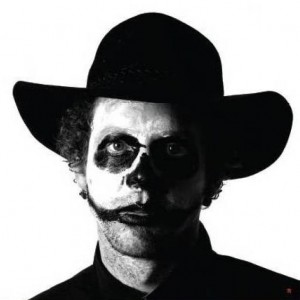|
|
| (2 intermediate revisions by the same user not shown) |
| Line 1: |
Line 1: |
| − | ''Pinecone Lightning'' is an experimental/folk project of Liberian-born, Raglan based, [[Marten Ten Broek]]. He released an album titled [[Pinecone Lightning (album)|Pinecone Lightning]] in 2010, and played at the [[Band Experiments 2010]]. The 16 track album was recorded in Raglan by Tom McCormick, and produced by them also. A very limited run of 100 c.d.s was produced, which were available in hand printed Linocut covers, with leaf green, black and white depictions of a Rowing Dinghy with a lightning bolt Transom,a face staring into the distance, a capital M, and a 13 pointed Star. | + | [[image:TenBroeck.jpg|right|thumb|Marten Ten Broek]]''Pinecone Lightning'' is an experimental/folk project of Liberian-born, Raglan based, [[Marten Ten Broek]]. Ten Broek released an album titled [[Pinecone Lightning (album)|Pinecone Lightning]] in 2010, and has since performed under the ''Pinecone Lightning'' moniker, including the 2010 [[Band Experiments 2010]]. The 16 track album was recorded and produced in Raglan by Tom McCormick. A very limited run of 100 CDs were produced, which were available with hand printed linocut covers. The songs on Pinecone Lightning were written over the course of a decade, athough mostly towards the latter part, in Hamilton, Raglan, and Te Mata in New Zealand, and Ahe in the Tuamotu Archipelago, French Polynesia. Themes of the songs are of love, sex, death, mermaids, work, remembrance, marijuana, homecoming, depression, hope, superficiality, nationality, peace, joy, and simple pleasures. Instruments used in the recording process included a left handed Fender cutaway acoustic guitar, a right handed Ashton Dreadnought acoustic guitar strung in reverse, a right handed Tokai Gakki classical guitar played upside down, and a J & D Brothers 6-string Banjo. The recording was done utilising a non linear editing process, which allowed for a complex and wide ranging choral effect. Work continues on a second album using similar processes, though with a wider range of instrumentation, including several self-made guitars, violin, cello, and a further selection of percussion instruments. |
| − | The songs on Pinecone Lightning were written over the course of a decade, mostly towards the latter part of it, in Hamilton, Raglan, and Te Mata in New Zealand, and Ahe in the Tuamotu Archipelago, French Polynesia. | + | |
| − | Themes of the songs are love, sex, death, mermaids, work, remembrance, marijuana, homecoming, depression, hope, superficiality, nationality, peace, joy, and simple pleasures. | + | |
| − | The following instruments were used in the recording process: left handed Fender cutaway Acoustic Guitar, right handed Ashton Dreadnought acoustic Guitar strung in reverse, right handed Tokai Gakki classical Guitar played upside down, j & d brothers 6 string Banjo, all fitted with Elixir strings. detuned Floor Tom, Tambourine, Railroad steel Pin, and a stainless steel Cup.
| + | |
| − | the recording was done utilising a non linear editing process, which allowed for a complex and wide ranging choral effect.
| + | |
| − | Work continues on a second album using similar processes, though a wider range of instrumentation, including several self made guitars, violin, cello, and a further selection of percussion. | + | |
| | | | |
| | ==External Links== | | ==External Links== |
Latest revision as of 18:28, 9 November 2011
Pinecone Lightning is an experimental/folk project of Liberian-born, Raglan based,
Marten Ten Broek. Ten Broek released an album titled
Pinecone Lightning in 2010, and has since performed under the
Pinecone Lightning moniker, including the 2010
Band Experiments 2010. The 16 track album was recorded and produced in Raglan by Tom McCormick. A very limited run of 100 CDs were produced, which were available with hand printed linocut covers. The songs on Pinecone Lightning were written over the course of a decade, athough mostly towards the latter part, in Hamilton, Raglan, and Te Mata in New Zealand, and Ahe in the Tuamotu Archipelago, French Polynesia. Themes of the songs are of love, sex, death, mermaids, work, remembrance, marijuana, homecoming, depression, hope, superficiality, nationality, peace, joy, and simple pleasures. Instruments used in the recording process included a left handed Fender cutaway acoustic guitar, a right handed Ashton Dreadnought acoustic guitar strung in reverse, a right handed Tokai Gakki classical guitar played upside down, and a J & D Brothers 6-string Banjo. The recording was done utilising a non linear editing process, which allowed for a complex and wide ranging choral effect. Work continues on a second album using similar processes, though with a wider range of instrumentation, including several self-made guitars, violin, cello, and a further selection of percussion instruments.
External Links[edit]
This Band-related article is a stub. You can help by expanding it.
